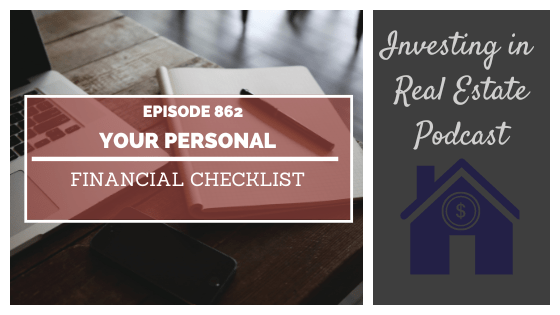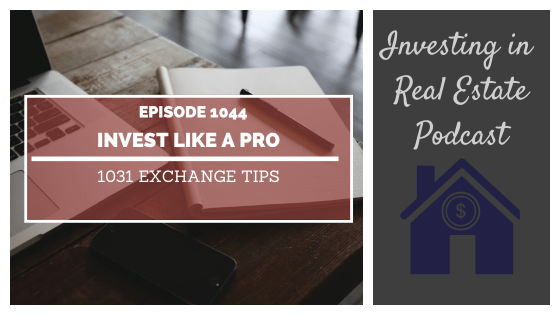
Welcome back to the Wealth Building Masterclass, part 3. This next part is usually the most eye-opening and incredible part for most of our clients. We’re going to take a close look at your personal financial checklist, including your assets and liabilities.
I’m often amazed by the stories I hear during this phase of the process because people discover available funds that have just been sitting there doing nothing for them. Please join me for part 3 of the the Wealth Building Masterclass!
More About This Show
But before I get started, if you haven’t watched the first two videos in the series, you’re going to want to go back and do so. Here’s part 1 and part 2.
Okay, back to your personal financial checklist.
Let’s start with the 401k since it’s the most common and most overlooked source of funding…
If you’ve got a 401k, it’s an excellent source of funds that’s probably not earning you much (if anything) within the volatile stock market. Especially when you consider custodial fees and all kinds of other hidden charges. Not everyone knows this, but you can actually borrow money from your 401k to use as a down payment on a new construction property.
And get this… If you have an old 401k from a previous job, you can roll that money over into a self-directed IRA that gives you control over your retirement by using that money to invest in real estate.
While we’re on the topic of retirement accounts, consider any current Roth IRAs or other retirement accounts you might have… All of those can be rolled over into a self-directed IRA account, or SDIRA, too.
Now, how about stocks or mutual funds? Do you have any money in those you can use?
And how about a primary residence? Do you own your own home? If so, do you know how much equity you’ve got available? If you’ve got some equity, you could seek out a Home Equity Line of Credit — or a HELOC — and possibly refinance your home to get some money to invest.
Do you have a savings account with a large sum just sitting there, collecting dust? I’m not asking you to drain your personal savings or wipe out your emergency fund, but if there’s enough for you to withdraw and put to work, you should! A savings account isn’t going to make you money, so why not use the money in there to start generating cash?
Do you own any properties that you’d like to sell? Maybe they’re not performing well for some reason or they’re causing a lot of stress… This is where a 1031 would come in handy. A 1031 Exchange basically allows you to “exchange” your current property for another one of similar value without having to pay capital gains tax.
Another thing you might think about is partnering up with another investor. Do you have any family members who might be interested in investing? How about friends or work colleagues? Partnering with someone is a great way to get started investing when you don’t have as big a chunk to start with.
Now, I want to revisit the idea of leverage again… I’ve mentioned it a couple times already but I really want you to understand the importance of leveraging your money. To help explain, I’m going to give you a couple examples. Since I’m a visual learner, seeing it in black and white really drove it home for me, so maybe it’ll do the same for you.
Example:
Let’s start with an easy example… Say you’ve got $150,000 to invest in real estate right now…
Okay, now let’s pretend you have the option to buy an existing, rehabilitated property for $150,000 cash, or the option to buy three properties for $450,000 using financing.
We’ll suppose you’ll get a monthly rental income of $1,300 per property.
With the all-cash purchase of the single rehab home, you’ll have $1,300 monthly gross rental income, no monthly mortgage payment, and let’s guess about $200 in taxes each month, $40 a month for insurance, $40 for monthly maintenance, and $100 a month for property management.
That gives you a monthly net cash flow of roughly $920 a month, or $11,040 each year. That’s a cash-on-cash return of 7.3% with no principal reduction and an annual appreciation rate of 2% (or $3,000). With the all-cash purchase of this single rehabbed home, your IRR would be about 9.3%.
Now let’s look at the non-recourse financing option to buy three new-construction properties with your $150,000…
Let’s dive into the numbers… Your purchase price for the three new properties is $450,000 but you’re only using $150,000 of your own money as a down payment on the loan. That gives you a mortgage of $300,000. In that case, your monthly gross rental income is $3,900 if each property provides $1,300 a month. You have a payment of $1,650 per month for the $300,000 mortgage, but remember that it’s covered by the rent the tenants are paying you. We’ll estimate property taxes at about $600 a month and insurance at $120. Let’s put back $120 a month for maintenance expenses, and then $300 a month toward property management.
Now here’s the fun part… Your monthly net cash flow is $1,100 a month, or $13,320 a year. That gives you an 8.8% cash-on-cash return. Consider a $4,650 principal reduction and 2% appreciation rate that equals $9,000. When you do the math, having the three new-construction properties will give you an 18% IRR per year.
The numbers speak for themselves, but I also want to remind you that as your rental income pays off your mortgage, your net cash flow is going to increase dramatically. So instead of the $1,110 in monthly cash flow you start out with, you’ll soon be at $2,760 a month, or $33,120 yearly. That is the true cash flow, you shouldn’t even consider the monthly cash flow as money in your pocket until that mortgage is paid off. Use that $1100 to pay off the mortgage faster or build it up for defense against emergencies, etc. The real cash flow comes once your rental income has paid off that mortgage.
Eventually, your $150,000 will provide you a yearly income of $33,120… all through leveraging your money in the smartest and most effective way possible.
All right… You’ve set your goals, you’ve learned where to start looking for money, and you know the power of leveraging that money.
Now, the next big step is making sure you keep doing your homework and due diligence. And deciding what company you want to work with when you’re ready to invest.
That’s exactly what we’re going to cover next week, in part 4.
Episode Resources
Book a Call with Our Team
Part 1: The Key to Wealth
Part 2: Goal Setting Workshop
Download your FREE 90-Day Bootcamp!
Subscribe to Investing in Real Estate on iTunes
Find Your Financial Freedom Number
Subscribe to the Morris Invest YouTube channel
Like Morris Invest on Facebook
DISCLAIMER: I am not a financial adviser. I only express my opinion based on my experience. Your experience may be different. These videos are for educational and inspirational purposes only. Investing of any kind involves risk. While it is possible to minimize risk, your investments are solely your responsibility. It is imperative that you conduct your own research. There is no guarantee of gains or losses on investments.
AFFILIATE DISCLOSURE: Some of the links on this channel are affiliate links, meaning, at NO additional cost to you, I may earn a commission if you click through and make a purchase and/or subscribe. However, this does not impact my opinion. We recommend them because they are helpful and useful, not because of the small commissions we make if you decide to use their services. Please do not spend any money on these products unless you feel you need them or that they will help you achieve your goals.
Ready To Build Passive Income Through Rental Real Estate?
Ready to talk about your goals? We're here to show you the tools and teach you the process to begin earning legacy wealth for you and your family.








